Zotac GeForce GTX 1650 Super Twin Fan: Entry Level Goes Super
A Super card for SFF systems?
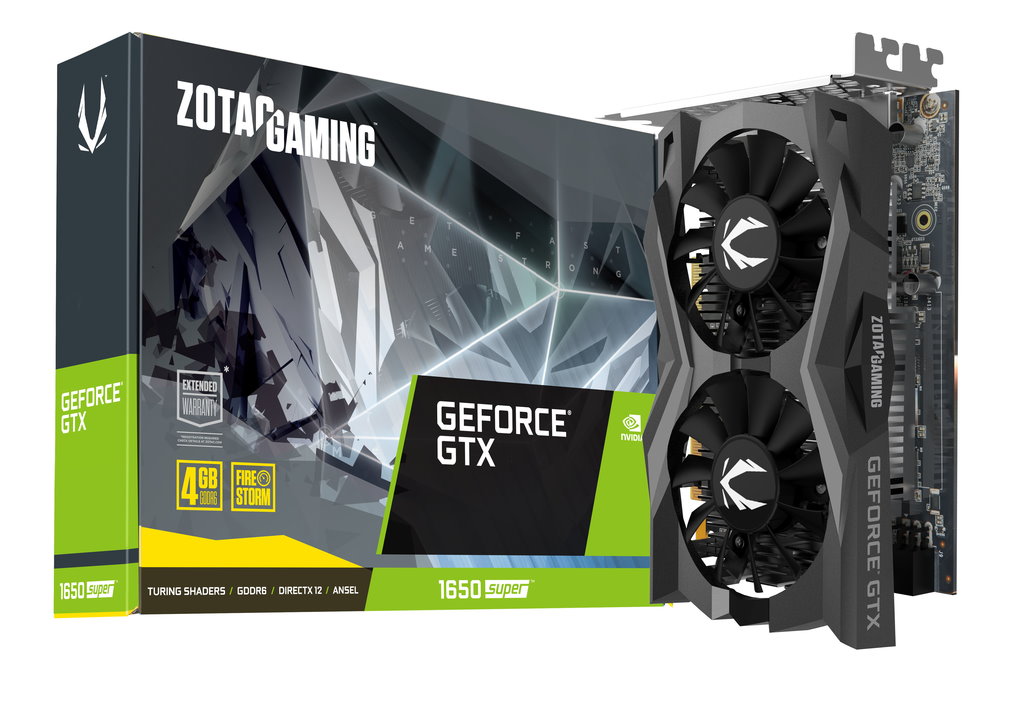
Nvidia has given the Super treatment to its budget-focused GTX 1650 Super. The new GTX 1650 Super card, like previously released Super GPUs, is a mish-mash of existing GPUs melded together to find a sweet spot that fills a performance gap. In this case, the 1650 Super sits in the large gap between the GTX 1650 and GTX 1660. The GTX 1650 Super adds more CUDA cores and GDDR6 (versus GDDR5) over the GTX 1650 and is marketed as a 1080p gaming card that will compete with AMD’s RX 5500 series (which has been announced, but has yet to materialize in the desktop space).
Similar to the GTX 1660 Super we reviewed, Nvidia hasn’t released a reference card, but left board partners to work their magic. Board partners are left to tweak clock speeds and add coolers and fans to bring unique choices to the market. In this case, we have a Zotac card in our hands which is a compact, two-slot design with dual-fan cooling and a 100W TDP and a listed boost clock of 1,725 MHz.
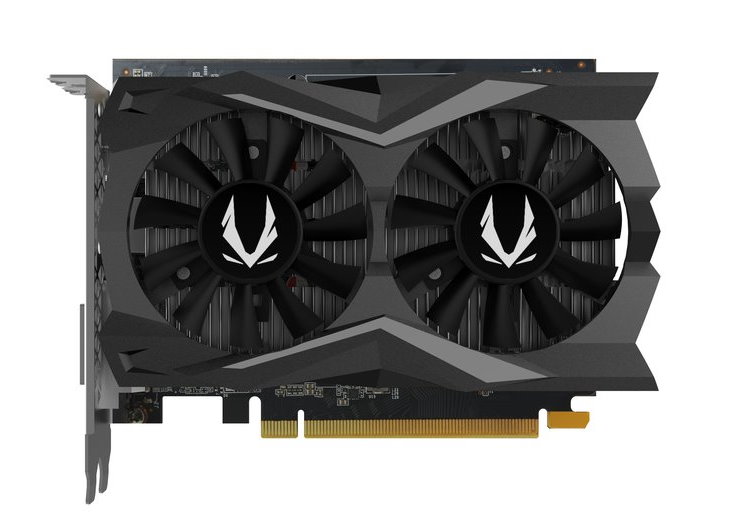
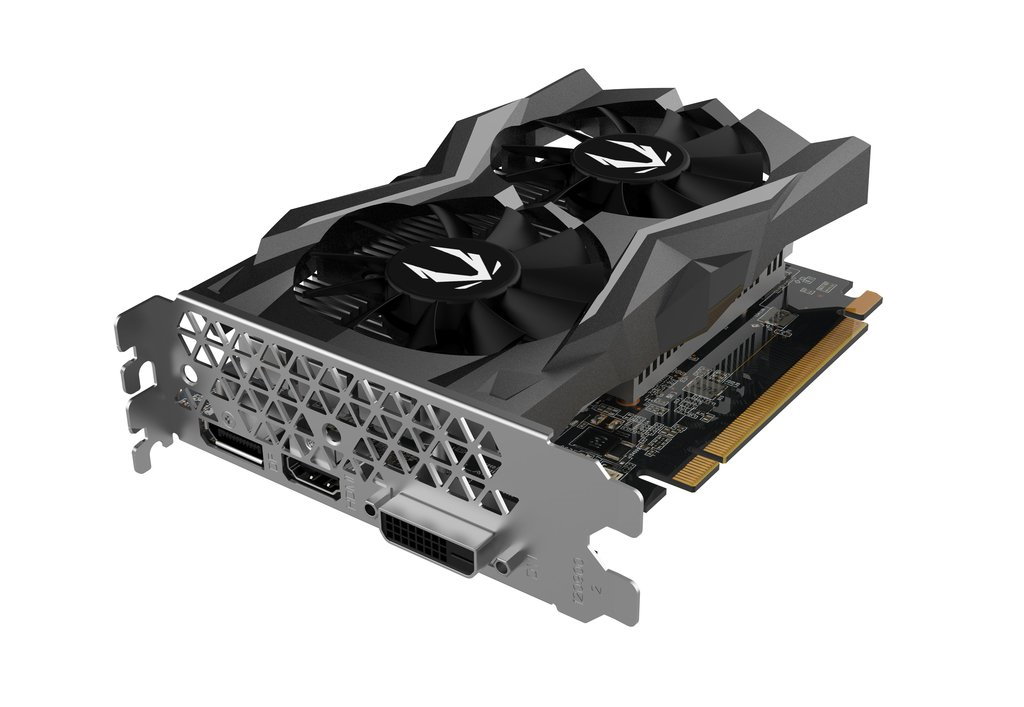
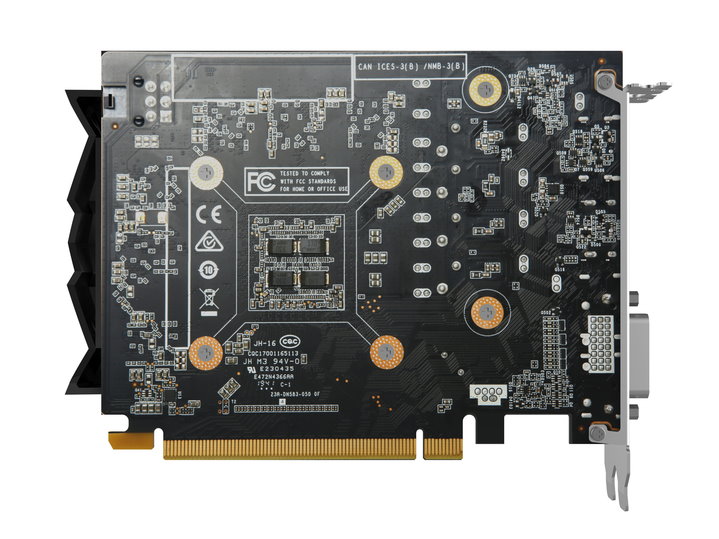
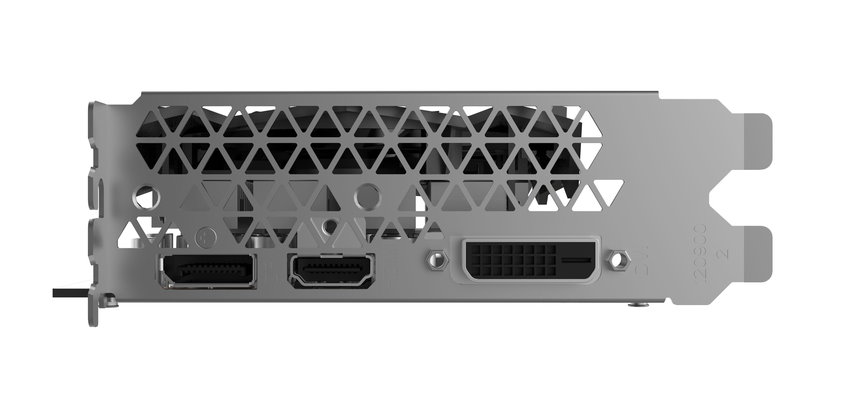
All GTX 1650 Supers carry 4GB of GDDR6, resting on a 128-bit bus. In this case, the memory runs at 12 Gbps, increasing the available bandwidth over the GDDR5 used in the non-Super GTX 1650 and GTX 1660, along with the increased CUDA core count. Power is fed to the GPU and memory through a single 6-pin PCIe connector. Coupled with the slot power, the card is able to use up to 150W while still being in spec. The 100W TDP sits between the 75W GTX 1650 and 120W GTX 1660, so it still sips on power.
The Zotac card uses a dual-fan cooling solution with a black-and-grey accented shroud covering the heatsink. Air is circulated in the case with this type of cooling, but does tend to be a bit quieter than the blower style. There’s no RGB LED lighting on this card, which is expected at this price point. Your RGB bling will have to come from somewhere else.
The GTX 1650 Super Twin Fan’s three display outputs, DisplayPort (1.4), HDMI 2.0b and a Dual-Link DVI-D, support up to three monitors. Below is a list of specs from Zotac, along with how the card stacks up against the 1650 and 1660. Note that some key specs are missing, and with no driver released ahead of time, we don’t yet have performance numbers.
| Header Cell - Column 0 | Zotac Gaming GTX 1650 Super Twin Fan | Nvidia GTX 1650 | Nvidia GTX 1660 |
|---|---|---|---|
| Architecture (GPU) | Turing (TU116?) | Turing (TU117) | Turing (TU116) |
| ALUs | 1280 | 876 | 1408 |
| Peak FP32 Compute (Based on Typical Boost) | ??? TFLOPS | 2.98 TFLOPS | 5.02 TFLOPS |
| Tensor Cores | N/A | N/A | N/A |
| RT Cores | N/A | N/A | N/A |
| Texture Units | ?? | 56 | 88 |
| ROPs | ?? | 32 | 48 |
| Base Clock Rate | ???? MHz | 1485 MHz | 1530 MHz |
| Nvidia Boost/AMD Game Rate | 1725 MHz | 1665 MHz | 1785 MHz |
| AMD Boost Rate | N/A | N/A | N/A |
| Memory Capacity | 4GB GDDR6 | 4GB GDDR5 | 6GB GDDR5 |
| Memory Bus | 128-bit | 128-bit | 192-bit |
| Memory Bandwidth | ??? GB/s | 128 GB/s | 192.1 GB/s |
| L2 Cache | ????MB | 1024KB | 1536KB |
| TDP | 100W | 75W | 120W |
| Transistor Count | ?? billion | 4.7 billion | 6.6 billion |
| Die Size | ?? mm² | 200 mm² | 284 mm² |
The Zotac card itself is small, measuring in at 6.2 x 4.5 x 1.39-inches (158.5 x 115.2 x 35.3mm) and barely reaches past the back of the PCIe slot. The small size makes it a great candidate for SFF (Small Form Factor) builds and HTPCs where real estate can be an issue.
Zotac’s Geforce GTX 1650 Super Twin fan should be available today. Price on this specific model is set at $159.99, which undercuts the GTX 1660 ($220+) by a fair amount and costs $10 more than than the base GTX 1650 ($150+). Expect a full review of this card soon.
Get Tom's Hardware's best news and in-depth reviews, straight to your inbox.

Joe Shields is a staff writer at Tom’s Hardware. He reviews motherboards and PC components.
-
King_V This may be a stretch - but the release of the Super cards makes me wonder: Is this really JUST to try and counter AMD, and Nvidia released the non-super versions out of short-sightedness or profit-margin concerns, or was the Turing architecture not quite ready for this performance level before?Reply
I'm just wondering why the non-Super versions existed at all, if these were coming out such a short time afterward. -
Blitz Hacker Reply
Assuming just a product refresh trying to push old stock.King_V said:This may be a stretch - but the release of the Super cards makes me wonder: Is this really JUST to try and counter AMD, and Nvidia released the non-super versions out of short-sightedness or profit-margin concerns, or was the Turing architecture not quite ready for this performance level before?
I'm just wondering why the non-Super versions existed at all, if these were coming out such a short time afterward.
Last gen products as a new current gen card with only a memory refresh, also not injuring the pride having to price slash (aka intel) to compete in markets to pad out the product stack.
The insane number of SKU's they have is mind boggling (I don't envy people new to understanding which GPU to get) or simply it could of been a tech/supply issue with memory.
However by using older turing GPU's with the faster memory, it demonstrates how much the non super versions are memory starved. Worryingly the build quality I see from tear downs on the super cards (especially mid/low tier in the stack) are worrying. Plastic backplates with no contact to the back of the board used for eye candy at the cost of thermals. Yikes.
Well people were complaining they didn't use backplates on mid/low market I suppose should of just thrown more RGB on it. :)
Also some are using double stacked 'thick' thermal pads for contacts with the heatsink/pipes and off centered pad placement, looks like they were just cannibalizing old stock to move it.
The GTX (pascal) lines were seeming to move off shelves as were the high tier RTX cards (reluctantly) but the mid/low tier turings weren't moving at all due to better price/performance on the GTX card stack, the RTX mid teir/low tier stack is not only over priced but anyone worth their salt knows your not getting anything 'game-able' with ray tracing above 720p.. maybe 1080 and why do that when you can get almost double the benchmarks and frame rates by just forgoing the Nvidia Ray-tracing sampler cards -
InvalidError Reply
If you include RTX in the equation, then Turing was nowhere near where it needed to be to drive broad interest into RT, especially on lower-end SKUs where it just isn't a viable feature. Things should get more interesting on 7nm.King_V said:or was the Turing architecture not quite ready for this performance level before? -
King_V Reply
There, I'll definitely agree. But, the 16- series is Turing without RT, and, well, I'd have guessed they wouldn't have been rushed, even if, possibly, it seems like the RT part of Turing might have been.InvalidError said:If you include RTX in the equation, then Turing was nowhere near where it needed to be to drive broad interest into RT, especially on lower-end SKUs where it just isn't a viable feature. Things should get more interesting on 7nm.